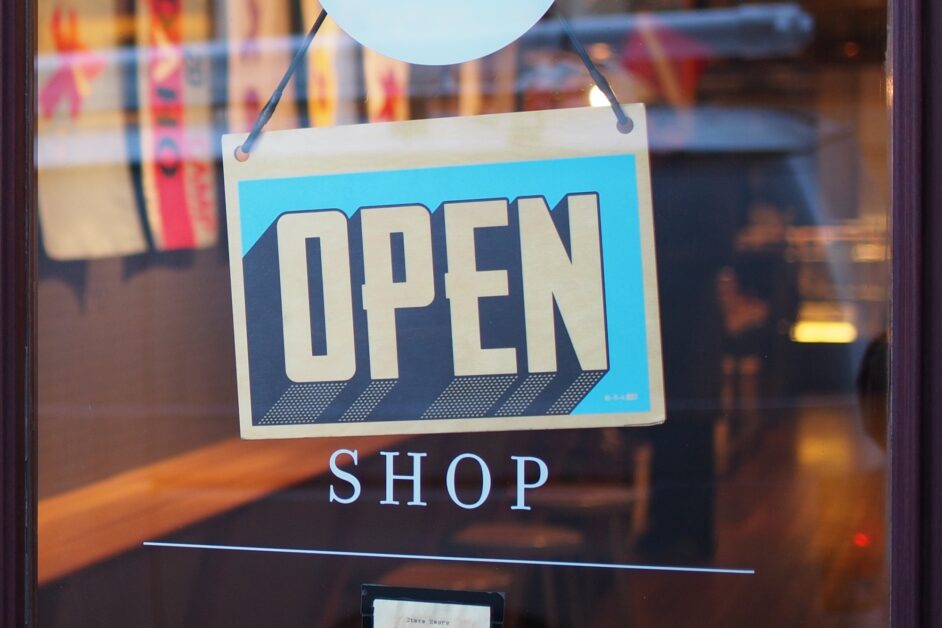Are you ready to launch your startup business this year? More than 615,000 businesses are launched each year, so you’ll have plenty of competition if you do.
Luckily, with a bit of planning, research, and preparation, you can learn how to open a store the right way. By taking the time to plan your store thoroughly, you can ensure your business lasts a long, long time.
Most fail within their first few years, largely due to rushing the process and not understanding sound business principles.
But we’ve put together this guide to show you how to open a retail store or an online store, or both, in 2022 and find success. Ready to start a company and make your entrepreneurial dreams come true? Read on below to learn how to start a business now.
Write a Business Plan
You’ve probably got plenty of ideas for your store, where it will be located, what products you’ll sell, and you’ll market your business. Great!
Now take the time to write all of those things down. You need to have a business plan in place, start to finish, before doing anything else when starting your store.
A business plan will be your guiding light as you go through the startup phase of your company. Whenever you feel lost or confused, you’ll have a document to refer back to, so you always know what to focus on.
A simple business plan can be just a page or two. An in-depth plan can be many, many pages. It’s up to you to decide which type to write. As long as you cover all the important details, it will suffice.
The plan will also help you to secure funding, whether in the form of a loan or investment.
Wondering what to include in your business plan?
Write an executive summary, which summarizes why your business exists, who it serves, and what makes it stand out. Then write a thorough company description, describing what you’ll be selling, where your products will come from, how many employees you’ll have, and your monthly revenue goals.
Include a market analysis, an understanding of the geographical demographics of your local area. Include information on competitors. Describe your marketing strategies, how you plan to get new customers through the door, and how to retain them.
Include your financial projections, as well as your start-up costs and funding requests. You can find business plan templates online to help guide you through this process.
Get Funding
Starting a store requires a lot of overhead expenses. You’ll need a commercial building to store your products and display them on the retail floor. You’ll need packaging materials to help ship products from online orders.
You’ll need to purchase your inventory. And you’ll need employees to help you manage it all.
If you have a lot of savings, that’s a great starting point. But for a resource-intensive business like a retail store, the more funding, the merrier.
Head to your local banks to see about getting a business loan or line of credit. If that doesn’t work, you can try getting a personal loan. If you feel strongly about your business and its success, you can even borrow against the equity in your home.
Or, you can seek out investors who will partner with you to bring your business to life.
Establish Your Brand
You’ll want to work with a professional branding expert to help you define and design your brand. Branding assets include a business name, slogan, logo, brand colors, and fonts to use on your marketing materials.
Having a professional do this ensures you create an appealing branding design, and you have consistent assets to use across various platforms and marketing materials.
Sign a Commercial Lease
Once you have your startup funds, you can start looking for your commercial building. If you’re operating exclusively online, then a small office or warehouse could do the trick.
But if you’re opening a brick-and-mortar shop, you’ll need a larger space in a good location. Location is everything when choosing a building. Think about anchor businesses. These are the businesses nearby that attract many people to your area.
Oftentimes, these are popular coffee shops like Starbucks, or they can be grocery stores or large retailers. Businesses with constant traffic, like hair salons, also work well as neighbors.
Especially in the beginning, when no one knows your brand, it will be very hard for customers to go out of their way to visit your store. That’s why you need to set up shop in a place they already frequent.
Become Legal and Get Insurance
Before you start making any sales, you want to put some protection in place, to keep both you and your business safe.
It’s helpful to set up a legal entity for your company. Most often, this is a limited liability company (LLC). This adds a layer of protection between you and your business.
That way, if your business does something wrong, they can’t come after your personal assets as well, since the company is separate.
However, an alternative legal structure may be beneficial for legal or tax reasons, so working with an attorney is recommended.
You also want to have insurance in place. You’ll need multiple policies if you’re opening a retail store.
General liability insurance will cover accidents or injuries caused to people on your property. You’ll need property insurance to protect the building you are renting, or that you purchased.
And business income coverage can help you out when something interrupts your business and you aren’t able to operate. For example, if there’s a hurricane or a snowstorm, and you can’t operate your business for days or weeks at a time, this policy would help cover your expenses.
On top of that, you’re going to need an IT security team in place to help protect you virtually. Cyberattacks are very costly to small businesses and can cause your business to go under if you aren’t prepared.
Accepting payments and storing customer information means that you’ll be a target for hackers on a daily basis.
Source Inventory
Now you’re ready for the fun part. Start ordering your inventory and stocking your shelves as you prepare to make your first sale.
Sourcing inventory can be as simple as contacting a few US-based wholesalers who already have all of the products that you need for your shop. Or it can be as complex as going straight to the manufacturer, either in the US or overseas, and developing custom products specifically for your brand.
Working directly with manufacturers is often the best long-term option, as you’ll be creating unique products that other retailers don’t have on their shelves. But it’s also much more time-consuming and can be tricky if manufacturers are overseas.
Launch Website and Social Media
So your initial supply of inventory is on a truck and heading to your location. What should you do while you wait?
Launch your website and relevant social media accounts so that prospective customers can start interacting with your business.
If you won’t be selling online, you can build a simple information website, since e-commerce isn’t necessary. If you will be selling online, you can use a platform like Shopify to launch an e-commerce store and connect it with your in-store inventory for a seamless store management process.
You can find freelance web designers on sites like Upwork to help you build and launch the site quickly. Also, create relevant social media accounts for your company. These will likely include accounts for Facebook, Instagram, Twitter, and LinkedIn.
Build a Buzz
In the days leading up to your grand opening, your marketing efforts matter greatly. If you can build a buzz, you can ensure a steady stream of customers from day one.
Start out with a press release. This will inform the world wide web, particularly on websites in your local area, about the opening of your new store. It also helps with SEO efforts as it will be distributed on many news websites and point back to your website.
Then, reach out to your local news providers. They need dozens of stories every day to produce their shows, social media content, and website content. They’ll often cover a new business launch.
Getting on your local news channel can be extremely effective at letting your whole town know that your store is open for business.
You can also partner with other local, non-competing businesses to build a buzz. For example, on opening day, you can have food trucks set up in your parking lot.
You can host raffles using products and services from other businesses. And you can print off discount coupons and flyers and distribute them to other businesses in your area.
And don’t forget social media influencers. If there are any influencers who cater to your area, paying them to promote your store is worth the expense.
And you can print off MoonWlkr Discount Code and flyers and distribute them to other businesses in your area.
How to Open a Store: Take Your Time
We hope you enjoyed our crash course on how to open a store in 2022. There’s a lot that goes into the process, and it will be quite the learning experience for you.
The biggest thing to take away is not to rush. Take your time to plan your business as thoroughly as possible. Doing so ensures the smoothest ride ahead, and the greatest chances of long-term success.
Looking for more business tips like this? Visit our blog now to find other helpful articles.









